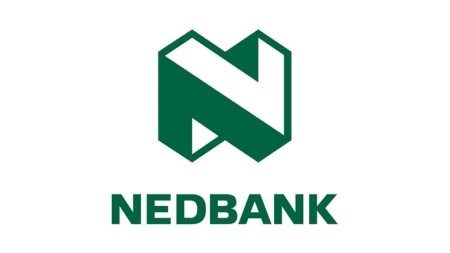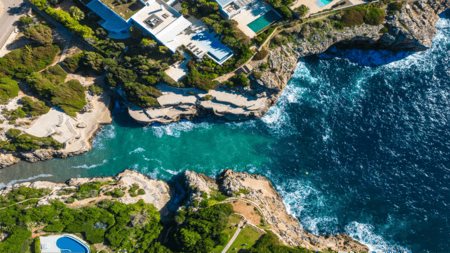John Loos of FNB Home Loans looks at the implications for the property market of October's further 50 basis point interest rate hike.
Although our economics team had recently indicated that it was not entirely confident of a further interest rate hike, our base case for quite a while has been for one last interest rate hike, and indeed, the SARB last month announced a further repo rate hike. This is the 7th rate hike in the current cycle, bringing the repo rate to 10.5% and will lead to prime rates rising to 14% shortly.
The Governor emphasised that inflation risks remained on the upside, and the SARB's forecast is for CPIX inflation to peak at 6.8% early next year, before a gradual decline back towards the target range.
For residential property, the negative impact of interest rates is quite significant. For this property segment, the interest rate situation started to deteriorate as far back as 2004 when the direction changed from one of aggressive cutting of the repo rate in 2003 to broad sideways movement thereafter (barring one or 2 small cuts). This led to the start of the residential market slowdown commencing in 2004, and it has continued broadly (barring a mini-surge in 2006) for about 3 years. The beginning of interest rate hikes last year has served to sustain the broad slowdown, along with the more recent National Credit Act implementation.
The October interest rate hike adds another R36 per month per R100,000 of mortgage debt, implying that for a R500,000 loan at prime rate a household will have to pay an additional R181 per month. While this doesn't sound extreme, since the start of the interest rate hiking cycle in June last year, the cumulative additional monthly repayment on a R500,000 loan at prime, amounts to R1,226 per month and R2,451 on a R1m loan.
For residential property, I believe that this interest rate hike will keep the market on its broad deteriorating trend for the time being, and average house price inflation is still expected to move downward from the 14.2% year-on-year number as per Absa in September, to just above 10% in the first quarter of next year. However, the Firstrand view is that we are either nearing, or have even perhaps reached, the peak of the interest rate hiking cycle, so I remain of the belief that early next year could be the bottom of the 3-year residential slowdown, where-after we could see a turn for the better.
This, however, is of small consolation for those who are concerned with the "here and now" of repaying monthly instalments on a home loan. Does one fix interest rates? Or does one pin one's hope on the SARB indeed being near the end of its interest rate hiking cycle; as the problem is that, given that lending institutions that offer fixed rates want to fix their own cost of funding so as to reduce their own risk to future interest rate volatility, fixed rates are linked to the forward interest rate market, and such interest rates are based largely on market expectations of future moves in the SARB's repo rate. In other words, if the market widely expects that the SARB will raise its repo rate (which determines banks' lending rates such as prime); then forward rates would be even higher than the current repo rate in anticipation of the repo rising, and the cost of funding in the forward market would be even more expensive than acquiring it at the repo rate. In short, this could imply a rather unattractive fixed interest rate. So when there is a general expectation (or fear) of further interest rate hikes, fixed rates are normally not very appealing.
The converse holds true too, i.e. when there is a general market expectation that the repo rate is set to be cut by the SARB, fixed rates offered by banks should start to become more attractive. The lesson is that, should one be looking to fix at some point where fixed rates are "attractive", don't abandon the search for those attractive fixed rates at this stage. A declining rate environment is often a better time to be looking for fixed rates than a rising rate environment, and at some point the rate declines will come (the other certainty besides death and taxes). Sadly, many people seem to rush to fix rates after the first interest rate hikes, and by that stage the forward market is normally well past its best.
But even despite the relative unattractiveness of fixed rates at present, it is important to emphasise as I have done before, that fixed rates should be seen as a service provided by banks which enables the client to, for a certain period, shift the cash-flow risk involved with fluctuating rates onto the bank. The bank assumes and manages the interest rate risk, and the client obtains certainty over interest rate payment cash flows. In return for this benefit, the customer can expect to pay some price. Should average floating rates over the period in question never rise to the level of the fixed interest rate for the period, then the client would have been better off (with hindsight of course) leaving his/her interest rate to float. Conversely, if the SARB shocks us with sharp interest rate hiking, and the average floating rate over the period is significantly higher than the average fixed rate, then the client will thank his lucky stars should he have fixed his interest rate at the beginning of the period.
Now we all know that the future is an uncertain place, as much as we have to try and predict it at some stage or another. For the more risk-averse person, even should floating rates never rise to an average rate equal to the average fixed rate for a specific period, the fact that this person has cash flow certainty under a fixed rate arrangement for a defined period, be it 1 year or 2 years or more, could allow her to sleep far more peacefully at night and thus be worth its weight in gold for that individual.
Conversely for the more risk-taking individuals, given a reasonably widespread feeling amongst economists that rate hikes are near to their peak, they may feel that they are losing out on an opportunity by fixing rates.
It is a personal decision therefore, but when considering whether to fix or not, think about the following:
What is your appetite for risk? Does it cause you major stress? If so, perhaps you lean naturally towards fixing.
How "close to the edge" are you financially? If your overall financial situation gives you very little leeway to absorb any nasty shocks, you may also lean towards fixing rates.
Always remember that for one to "score" by fixing rates in terms of paying less interest, the average floating rate on a bond for the entire period of fixing must exceed the fixed rate for the period in question. Do your calculations correctly.
Finally, don't abandon the search for attractive fixed interest rates when the repo rate finally looks like it has peaked and set to decline. Ironically, that would be the time when fixed rates start to become more attractive.



